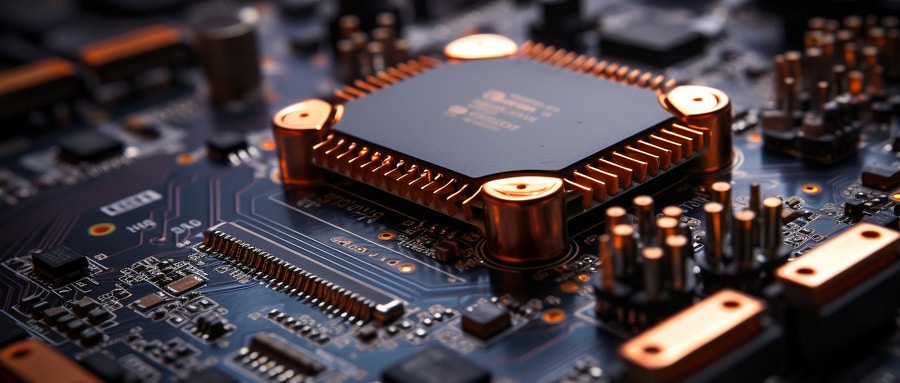Exploring the Realm of Power Module PCB: An Extensive Guide on Its Capabilities and Applications
Power Module Printed Circuit Boards (PCBs) represent technological innovation and advancement within electronics. As integral parts of various electronic devices, power module PCBs serve to steer functionality and performance. This comprehensive guide seeks to unlock their mysteries – their design, operation and wide variety of uses are explored herein.
Understanding Power Module PCB
Understanding the basic concept behind power modules PCBs is the starting point to exploring this realm of electronic components. They serve an integral purpose by controlling power distribution within electronic devices.
From smartphones and laptops to complex robotic systems, power module PCBs regulate the electrical current flow for smooth operation. By transforming input voltage into something suitable for various integrated circuits and components to use effectively, they maximize device efficiency and longevity while improving overall efficiency and longevity.
Design Features
A power module PCB features unique designs that make it suitable for diverse electronics. Generally, this PCB integrates power semiconductors and passive components onto one board in high density for better heat dissipation, compactness, and improved reliability – three essential qualities found in contemporary electronic designs.
Unlocking the Operating Mechanism
Tracing the functioning mechanism of a power module PCB reveals an intricate system for power conversion and distribution. Assuming input power comes in direct current (DC), it must then be converted to meet the needs of electronic devices in question using techniques such as inversion, rectification, regulation, controlled by advanced circuit design.
Applications and Utilization
Power module PCB applications can be found throughout our daily lives, from consumer electronics to industrial machinery. Their ability to manage and convert power efficiently makes them ideal for renewable energy systems, electric vehicles, power supply units and space applications.
Power module PCBs represent the pinnacle of electronic innovation. Their complex operations, distinctive designs and varied applications demonstrate their wide-ranging applications – acknowledging this fact not only broadens our understanding of our everyday devices but also opens up vast potential in electronic design.
Exploring the world of power module PCBs is like uncovering an amazing blend of science and technology. With perceptive insights into electronics at its core, discovering these complex devices opens doors for optimizing efficiency and sustainability of daily devices we use daily.
By thoroughly exploring power module PCBs, we can gain an increased appreciation of their pivotal role in our interdependent world. These revolutionary boards continue to revolutionize electronic industry innovation and advancement.

This comprehensive guide on power module PCB sheds light on its significance in today’s electronic era, and seeks to educate about their influence and significance in everyday electronics use. As more knowledge is accumulated about these intricate devices, the more informed decisions we are able to make regarding our electronic usability and sustainability – underscoring once again that small is indeed big in electronics!
FAQ:
- Q: What is a power module printed circuit board?
A: A power module printed circuit board is a circuit board specifically designed to manage and control electric power in an electronic device. It typically includes elements like converters, switches, and capacitors. - Q: What are the benefits of using a power module printed circuit board?
A: Utilizing power module printed circuit boards simplifies system design by integrating several power management components onto a single board. This can enhance efficiency, save space, reduce component count, and enhance reliability. - Q: What are some challenges faced when designing a power module printed circuit board?
A: Primary challenges include handling high currents, managing heat dissipation, ensuring appropriate spacing for high voltage components, and maintaining good power signal integrity. - Q: Are power module printed circuit boards physically larger than other printed circuit boards?
A: Not necessarily. Although power module printed circuit boards often deal with higher power, advances in technology allow for miniaturization of components, enabling the production of compact power modules. - Q: How is heat dissipation managed in a power module printed circuit board?
A: Heat dissipation in power module printed circuit boards is usually managed through careful design which could involve thermal vias, heat sinks, or specific layout practices to distribute heat evenly and reduce hotspots. - Q: Can I design a power module printed circuit board myself?
A: While possible, designing a power module printed circuit board requires a deep understanding of electronic circuit design, power handling, and thermal management. It might be more efficient to work with professional designers or manufacturers. - Q: What is special about the material of a power module printed circuit board?
A: High-power module printed circuit boards often use materials with higher thermal conductivity than standard PCBs to better manage heat dissipation, such as metal-core PCBs (MCPCBs). - Q: Where are power module PCBs typically used?
A: Power module printed circuit boards are commonly found in various devices requiring power management, such as power supplies, inverters, electric vehicles, industrial machines, and more. - Q: How does a power module printed circuit board improve system reliability?
A: By integrating several power components onto a single PCB, you reduce potential failure points, consequently improving system reliability. - Q: Are there any safety considerations when using a power module printed circuit board?
A: Yes, safety guidelines should always be followed due to the high power and voltage often involved with power modules. This includes ensuring proper insulation, avoiding overloading, and following manufacturer guidelines.























